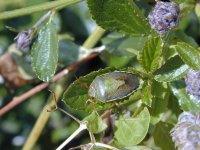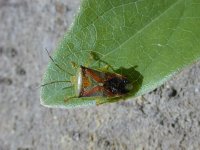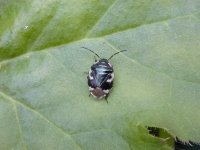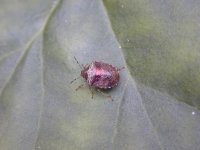Angus T said:
Harry, I was rather hoping you were going to elaborate more on why there were samy many on a 4ft X 4ft shrub and none on the others

Hello Angus,
A great many insects find their mates by scent and the Shieldbugs do emit a rather strong smell which, although often used for defensive purposes, may also help other specimens to locate each other.
It's quite likely that it started with just one Shieldbug, feeding on the sap rich
new shoots of Buddlia. The scent attracted another specimen and so on, the more specimens that were present, the stronger the scent, and the greater the lure to other specimens in the vicinity.
A few years ago when seeking the Juniper Shieldbug in the Northumberland uplands, I had beaten over 50 female berry bearing Juniper bushes and found none at all, yet when I tried another bush there were over 25 specimens all together on a single branch, so it seems like communal grouping for mating purposes does occur frequently with several , if not all, Shieldbug species.
Many Shieldbug species are known to accumulate in such a way to find mates in spring. After mating the females will disperse into the surrounding area to lay. It would appear likely that the individual Buddlia was where the first specimen alighted, and other specimens were attracted there. It could I suppose, have chosen any of your Buddlias, it just happened to choose that particular one.
It would be interesting to experiment with the possibilities of assembling Shieldbugs in the same way as we use virgin moths to attract males. As far as I am aware, no one has done this with Shieldbugs in the past. The problem is I suppose, is in finding a virgin female Shieldbug in the first place.
Harry







